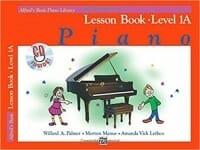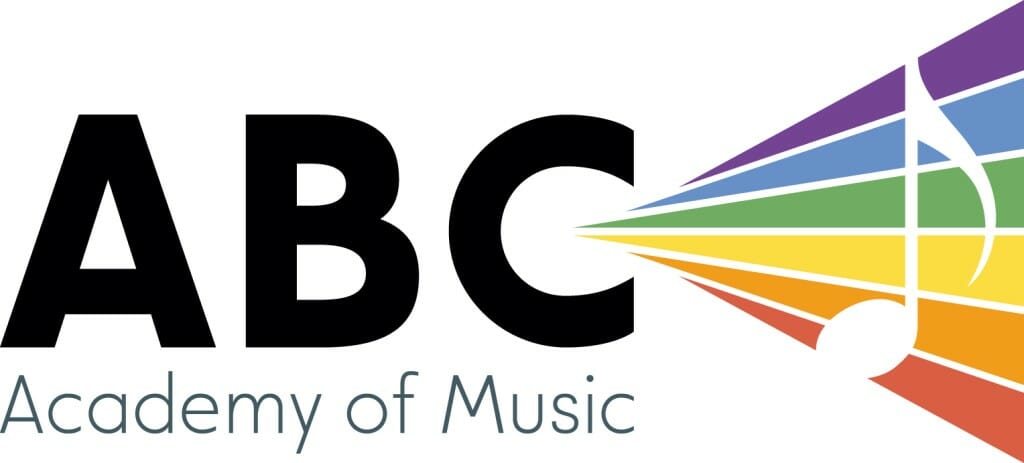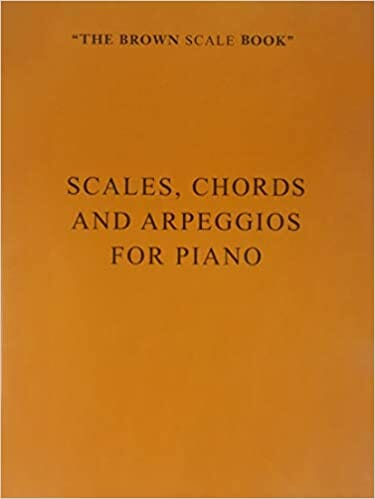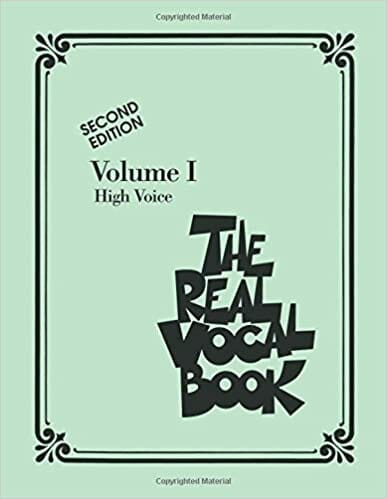B.Mus (Humber) in-progress
Adina is a singer-songwriter based in Toronto completing her Bachelor of Music degree at Humber College in vocal performance. Trained classically in piano since the age of 5, she has branched out into pop and jazz as well.
Vocally she is well-versed in many genres including jazz (she loves to scat!), musical theatre, pop, singer-songwriter, country, R&B, and acappella. She has 7 years of choir experience in both chamber and jazz styles. Adina has been writing and singing original songs since the age of 12, and has two singles as well as an EP out on all platforms under the artist name Adina V.
She has performed all across southern Ontario singing with the Toronto All-Star Big Band, as well as at various venues in the GTA with her own jazz duos and trios. As a member of the Cawthra Park Chamber Choir she performed at Roy Thompson Hall with the TSO for two years in a row. At Humber College she is part of the Vocal Jazz Ensemble led by Lisa Martinelli; this group performs advanced repertoire at events like the Ontario Vocal Jazz Festival.
Adina has been teaching music for the past 7 years and loves helping students meet their personal goals while fostering a love of music that lasts forever!
Get to know Adina…Beyond the Bio!
Hobbies: reading, puzzles, video games, painting
Musical Influences: Ella Fitzgerald, Nancy Wilson, Doris Day, Joni Mitchell, Taylor Swift, John Mayer
Favourite Food: Pad Thai
Least favourite food: eggplant
Favourite music: Indie rock and folk
Favourite song: All I Need by Jacob Collier ft. Mahalia & Ty Dolla $ign
Favourite movie: Matilda
Favourite movie music: The Pirates of the Caribbean theme
Favourite Musical: Dear Evan Hansen or The Last Five Years
Best Quote from your teacher: “It’s an amazing and wonderful experience to be able to be intentional about, in the moment, making music”
Favourite Quote: “Even as we are, we are becoming”
Favourite Book: The Girl With the Dragon Tattoo trilogy – Stieg Larsson
Best thing about teaching at ABC: Sharing and fostering a love of music with students of all ages
Latest Homework from Adina
Is Adina Your Teacher?
Sign up now to get your weekly assignments delivered, and never lose your homework sheet again!
Sunday, January 31, 2021
Emet
This week we switched our triads from D minor to F major. The fingering is still the same, with RH using finger 2 in first inversion, and LH using finger 2 in second inversion.
Hound Dog – On the second page LH’s bassline pattern now has staccatos, in contrast to the first page where you play everything legato. This second half of the piece is bouncier! Keep doing your counting with “ands”, especially when the melody of “but that was just a lie” comes around since that rhythm is more complex.
Hey Jude – This song will be our main focus this week. Please play up until bar 38, but divide how you practice up based on the form of the song: bar 1-16 is the verse, and bar 17-38 is the chorus. For each section, play each hand separately first, and then try it together. We talked today about FACE in the space for the treble clef space notes, but also Every Good Boy Deserves Fudge for the line notes. Using this saying will eliminate the guessing, especially for notes higher on the staff. Do also take note of the distances the melody is moving (usually it’s steps or skips) – it will help with your reading. Remember this song has a Bb in the key signature!
For next steps, I suggest leveling up in both of your current books to level 4. Here are the links for Amazon:
Nathalia
Today we introduced the C major scale as a new warmup. When we play this scale we start on C and step all the way up to the next C (and then back down again). Fingering for the RH is 1-2-3-1-2-3-4-5 and for LH is 5-4-3-2-1-3-2-1. The way down will just be the reverse.
7th St. Blues – Noticing intervals in this song is very helpful – LH is only ever going between a 5th, 6th, and 7th, with G being the static bottom note. RH similarly also has a static G on the bottom of its triads. Since this song is short, see if you can get the notes comfortable enough to keep a steady groove/rhythm throughout the entire piece.
Bye Bye, Love – Keep practicing the “verse” section as we have been doing, but this week RH can look ahead and read the “chorus” melody. RH plays a lot of 6ths, so try to notice what those look and feel like for your hand! Only go until the 1st bracket (don’t worry about the 2nd ending just yet).
Kollel
Today we discussed the “cycle of 5ths” and how it helps us determine keys and their key signatures. Start on C, and each time you go up in 5ths, it adds one sharp to the key signature. We have already played G and D major, so now we have A major, which has 3 sharps. Which 3 sharps is determined by the order of sharps, which has the saying Father Charles Goes Down And Ends Battle. So, for A major, we will use F#, C#, and G#.
Etude in G – This week please put only the first two lines hands together. The reason I am asking for only this much is so you can really focus on the articulation, especially the staccatos. They add so much to the character of the piece. Bars 3-4 and 7-8 have both hands playing staccatos at the same time so that will make it easier. RH, when playing thirds please work on getting your two notes playing at exactly the same time, not slightly staggered. As soon as you brought awareness to this it already started improving, so just keep it in mind.
Fur Elise – You can definitely add the pedal into the A and also the C sections of this piece. Keep it out of the B section for now since there are some bars that need review, specifically bars 28-30. Double check rhythms and notes, and still keep that grace note out for now. LH please remember when we cross over octaves in the A section to not twist but rather tuck – it’ll be way safer for your wrist and fingers.
As for a new book/piece, I do recommend the Pachelbel’s Canon for now if there is a way for you to acquire that PDF. In terms of a collection of pieces, I’ll have to do some more research since I can’t actually leaf through any options – online you can only see one or two pages as a preview and I don’t want to recommend anything that’s the wrong level!
Tuesday, February 2, 2021
Thanks for a great round of lessons today everyone!
Ken
This week as a warmup, play all the triads on the white keys – start on C major and move up in steps. As a bonus, listen and try to figure out if the triads are major or minor.
Dinosaur Stomp – The LH rests are very important to the character of this song – please don’t forget them! In LH, finger 2 is the one doing double duty on the C and C#s; we tend to avoid putting our thumb on black keys if possible.
The Dreydl Song – This piece starts on beat 4, with a pickup bar. Notice how the 1 beat in this pickup bar plus the 3 beats in the final bar equal to 4 (our time signature). Please remember to hold half notes for 2 counts and dotted half notes for 3.
The Bubble – Last song in the book! Have some fun with this one, especially at the end. Note the “very slowly” and “quickly” in the final line – once notes and rhythms are learnt start adding these as well as the dynamics and accents for more character. In bar 29 we see a symbol called a fermata – this means hold the note or rest for slightly longer than is written – you can feel it out and release when it feels right.
For all songs please remember the new note low G, which is on the bottom line of the bass clef!
Steve
Mr. Brahms’ Famous Lullaby – This piece just needs a bit more time for the notes and rhythms to feel comfortable. Whenever you have to play Bbs, slide your hand further up into the keys so reaching them becomes easier. Almost every single Bb is is labeled, just watch out for the 2nd one in bar 6, since that carries over from the first flat.
Ice Cream and More Ice Cream – These are the same piece, just transposed. This means we take a song and move it to new position. RH please watch whether you’re moving in steps or skips. LH, you are playing intervals in a pattern: 5th, 4th, 3rd, then 2nd. Notice how these intervals sound and look on the keyboard and music.
Mr. Haydn’s Theme – Another short piece, let’s make sure the articulation is nice and distinct between legatos and staccatos. Again, RH please pay attention to whether we move in steps or skips, especially in bars 3-6.
Gabe
Today we spent some more time going back and forth between major and minor triads – remember that the middle note is the one that changes, and it’s not always going to a black key. Play around with various bottom notes and find the major and minor versions of the triad. We also talked about intervals, which refers to the distance between only 2 notes. 5ths sound like the Star Wars theme, 4ths sound like Here Comes the Bride, and 3rds sound pretty and like a doorbell.
Canon in D – Before starting to play this song, remind yourself that we are always playing F# and C# because it’s in D major. Please do your best to play with both hands, not just RH.
Theme from Don Giovanni – This week let’s add sing the counting along while playing the RH melody. Keep the piece hands separately but do play the LH part as well this week. Next week we will try hands together.
Isaac
Please complete pages 50-51 in your theory book for next class. We also added a scale warmup – G major 1 octave hands together. Your finger 3s should be lining up on B and E.
Climb up on an Elephant – Before jumping in and playing the whole piece, please play LH only in bars 9-12. This is an important melody, and I’d like you to really distinguish between your eighth note and quarter note timing. Remember, because we are in 6/8 time quarter notes actually get 2 counts. This piece needs just a little more reviewing to get it smooth and flowing from one bar to the next.
Andante in G minor – This is our new piece. Start off reading the whole thing hands separately, noting those few bars of 2. Don’t worry about the repeat signs when you practice. Because this is a Baroque era piece, we actually want to play all quarter notes detached for both LH and RH. Only connect eighth notes and wherever there is a slur.
Wednesday, April 7th, 2021
Dvorah
Recommended minutes to practice: 10-15 minutes a day
What to practice: Gorilla in the Tree (LH song), March on D-E-F, Mister Bluebird
How to practice it most effectively: LH please continue to play Gorilla in the Tree as a review piece – remember your F is below middle C. Middle C is always the note above the staff on the little line. March on D-E-F and Mister BlueBird are RH songs, using all the notes in C position. C, E, and G are line notes, and D and F are space notes. Always watch which direction the notes move in or whether they are repeating.
Diya
Recommended minutes to practice: 15 minutes a day
What to practice: Saying musical alphabet forwards and backwards, C 5-Finger Position Warmup (p.5), C position to B position 5-4-3-2-1 vocal warmup, and A Million Dreams
How to practice it most effectively: For the C 5-Finger Position Warmup, play one hand at a time, and say/sing the letters out loud while you play. A 5-finger position means that each finger has a home, and you don’t have to move from that spot. Notice what stepping vs. skipping looks like on the page and in your hand. You can always use the sayings for lines and spaces to help you find notes if you’re unsure. The vocal warmup starts with your hand on C position, playing fingers 5-4-3-2-1. The syllables are “ee-ee-ee-ee-ah”. First play the piano notes alone, then focus on finding your first note, and finally play and sing the exercise together. Please move up through all the positions! C through to B. For A Million Dreams, remember that verse guide note is C, prechorus guide note is A, and chorus guide note is D.
Here are youtube lyric videos for both Do, a Deer and My Favourite Things from The Sound of Music:
Marco
Recommended minutes to practice: 15 minutes a day
What to practice: Firefly (transposed), Little River, and Sailing in the Sun
How to practice it most effectively: For Firefly in G position, make sure you use the exact same finger numbers, and follow the steps and skips carefully – the song should still sound the same. Little River is a warmup song to help us practice playing legato, or connected. When playing legato, you have to hang on to the previous note until the next note plays – there will be a split second where both are playing at the same time! In Sailing in the Sun, there are slurs between the hands as well. Really count those quarter rests, since they add a lot to the fun character of the piece!
Oliver
Recommended minutes to practice: 10-15 minutes a day
What to practice: Thumbs on C warmup, My First Waltz
How to practice it most effectively: Please always double check that your thumbs are on C and not accidentally on D! From there all the fingers have their spots. The warmup starts with both finger 1s on C and steps outwards first with finger 2s, then 3s, and so on, then steps back inwards. For My First Waltz, there are a lot of repeated notes and patterns – line 1 and line 3 are exactly the same, and the pattern in bar 2 comes back again and again. Please pay extra attention to whether notes are moving in steps or skips in lines 2 and 4.
Linda
Recommended minutes to practice: 20 minutes a day
What to practice: Diminishes 7 chords and inversions (hands separately), Marching Trumpets, Playful Puppy, Pure Imagination
How to practice it most effectively: When playing the diminished 7 chords, start with the familiar C# diminished 7 shape then move up inverting it – notice how the intervals and quality of the chord stay exactly the same regardless of which note is on the bottom. For Marching Trumpets, the final piece of the puzzle will be to add dynamics in, especially making the p and f sections stand out against all the medium levels. Playful Puppy can also see some dynamics added in, as well as a gradual speeding up to make it cute and, well, playful! For Pure Imagination, we crossed out any extensions that aren’t needed in the chord shapes. When there is the Bb diminished 7 chord, you can continue to play the C# diminished 7 shape in RH, just with LH taking the Bb as the root. Try adding in LH on single notes as you play through it this week.
Emet
Recommended minutes to practice: 20-25 minutes a day
What to practice: F major scale (hands separately), Scherzo, Piano Man
How to practice it most effectively: In the F major scale there is a Bb; LH fingering is regular, while RH plays 1-2-3-4-1-2-3-4. For the Scherzo, please play through the three LH minor shapes back and forth a few times before starting the piece to really solidify them. LH plays eighth notes on beats 1 and 4, but has rests for the rest of the bar; make sure to lift once RH moves to beats 2 and 5. You can play the whole piece hands together now! In Piano Man, please isolate bars 53-54 with RH only first, then play bars 51-54 RH only, then finally play 51-54 with RH and LH. The idea here is to be very accurate with the RH rhythms. When we reach the ending, do a dramatic rit so it really feels finished.
Kollel
Recommended minutes to practice: 25 minutes a day
What to practice: Eb major scale (hands separately 2 octaves), Dance of the Dragonflies, Canon
How to practice it most effectively: In the Eb major scale we have 3 flats: Bb, Eb, and Ab. RH’s fingering rule will be like last time (finger 3 on Eb, finger 4 on Bb), but LH now will play finger 3 on Eb, finger 4 on Ab. For the new song, Dance of the Dragonflies, please go hands together up until bar 16. From the get go, be super aware of all articulation; keep your hand and wrist bouncy and light for the staccatos. Remember that for the first two lines the hands are never actually coming in together at the same time, they’re always taking turns. For Canon, really start the beginning nice and piano so you have somewhere to grow. In lines 4 and 5 we talked about eliminating the 4th note from each group of LH’s eighth notes so you’re only playing root-5th-root like in lines 6 etc. Please remember that on the F# chord it’s all black keys (F# and C#). I think you can try to play the whole song with pedal!
Preferred Books for Adina’s Students
Click to buy them here, and they’ll come right to your house! What could be easier?
Alfred's Basic Piano Library Lesson Book 1A

Alfred's Adult Basic All-In-One
Alfred’s Basic Adult All-in-One Course is designed for use with a piano instructor for the beginning student looking for a truly complete piano course. It is a greatly expanded version of Alfred’s Basic Adult Piano Course that will include lesson, theory, and technique in a convenient, “all-in-one” format. This comprehensive course adds such features as isometric hand exercises, finger strengthening drills, and written assignments that reinforce each lesson’s concepts. There is a smooth, logical progression between each lesson, a thorough explanation of chord theory and playing styles, and outstanding extra songs, including folk, classical, and contemporary selections.
The Brown Scale Book
This essential resource includes all major and minor scales, triads, arpeggios, dominant sevenths, and chromatic scales organized by key. A favorite for decades, The Brown Scale Book belongs in every student’s library.
The Real Vocal Book
The Real Vocal Book has many of the selections from Volumes 1 and 2 of the instrumental Real Books, but now with complete lyrics added to the pre-existing melody line. This edition features 300 essential songs arranged for low voice, including: Alfie * All of Me * Autumn Leaves * Bewitched * Bluesette * Don’t Get Around Much Anymore * Fever * Georgia on My Mind * Misty * Moon River * My Funny Valentine * Satin Doll * and more. Looking for a particular song? Check out the Real Book Songfinder here.









